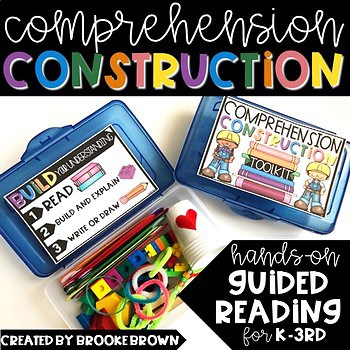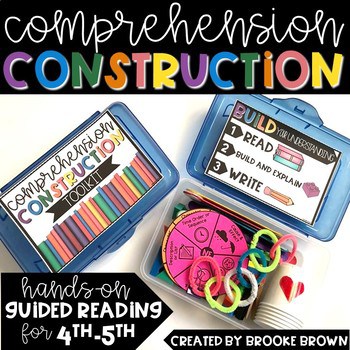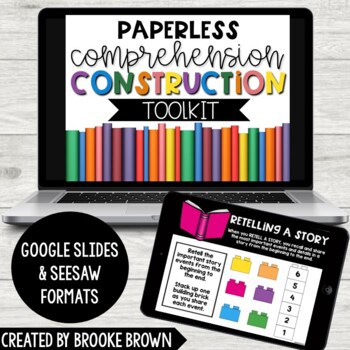Simple Strategies for Hands-on Literacy
Ready to engage your students with hands-on literacy strategies for centers, guided/small group reading, and interventions? This post is packed with simple tools and ideas to bring the magic of kinesthetic learning to your literacy instruction! These suggestions are perfect for classroom teachers, special education teachers, interventionists, and reading specialists. Here are a few reasons why I feel hands-on literacy is a must in your classroom:
Bottom line? Our ultimate instructional goal is ENGAGEMENT! Most often, we incorporate manipulatives and hands-on learning during our math and science instruction, but there are so many simple ways to engage our students with those same hands-on materials during our literacy block… and those strategies can be the secret sauce to maximizing engagement in your literacy instruction.
Let’s start with some Word Work strategies that are perfect for small group reading and literacy centers!
Pipe cleaners and beads are one of my favorite ways for students to practice blending and segmenting sounds, counting words and sentences, and counting syllables. Students simple slide beads from one side to the other for each sound, syllable or word. They’re inexpensive to make and you can use them over and over! I also recently discovered these “fidget popper” toys on Instagram after they were recommended by @happy.little.hearts and they are just the COOLEST! They come in all different shapes and colors on Amazon, and they’re perfect for sounds, spelling, and counting words/syllables.
This paint tray from Amazon has SO many possibilities! Blending and segmenting sounds, high frequency words, syllable count, word count, and more! You can use manipulatives such as pom poms, mini erasers, playdough, or these super cool magnetic chips and wands. An extra bonus is that the entire tray is dry erase, so students can write and erase!
CLICK HERE for a discounted 6-pack of paint trays! (These do not have the marker holder on the top.)
You guys know that I love using building bricks and LEGO for ALL the things, and word work is no different! Simply give your kids two 4-peg bricks and one 8-peg brick and have them share words and word parts out loud. For contractions, have them state the two words (i.e. “will” “not”) and the contraction (“won’t”) as they connect each piece. To practice compound words, they can state the two words (“butter” “fly”) and then the compound word (“butterfly.”) They also work great for breaking words into prefixes, root words, and suffixes. To take it to the next level, throw in a whiteboard or scratch paper and add in a writing component! Students can write the words they build or even write sentences using the words.

Magnets are always a fave in my classroom, and they’re a great way to practice rhyming words too! Students stick the magnets together if two words rhyme, and pull them apart if they don’t. (This strategy also works great for comparing and contrasting two topics!) You can make your own with popsicle sticks and sticky magnets or purchase sets of magnetic wands.
Looking for more Word Work ideas and templates? Check out my DIY Word Work Construction collection in my shop with mini cups, plastic cubes, and building brick options:

Now let’s take a look at some simple hands-on strategies for comprehension that are perfect to add engagement to your guided/small group reading.


Snap cubes and building bricks are perfect for sequencing, retelling, and summarizing the plot of fictional stories! Students simply connect a cube or brick as they share and discuss each component of the story aloud. Add a writing component by having students write each piece of the story in order.


Stacking mini cups is always a student favorite! Add them to your small group reading with story elements by drawing symbols on the cups and having students “stack” each element of the story. You can also use dominoes for students to practice connecting causes and effects.


There are SO many comprehension possibilities with popsicle sticks/Velcro dots and even pattern blocks!
Check out my printable Comprehension Construction Toolkits in my shop for K-3rd Grade and 4th-5th Grade! I’ve also recently created a paperless version for virtual/remote learning.



If you’re looking for ready-made hands-on kits with BOTH word work and comprehension components, check out my brand new hand2mind Reading Construction Toolkits!
These toolkits include a variety of hands-on manipulatives, 36 lesson cards, and blackline reproducible recording sheets for three differentiated grade level bands. They’re perfect for small group reading with enough materials for four students to share.



Here are a few more simple ways to add hands-on engagement to your literacy centers and writing block! Pair STEM Bins with simple writing prompts for descriptive, procedural, and creative writing. You can also use my printable STEM Bins Quick Writes for quick and easy writing extensions.



HAND2MIND STEM BINS – – – QUICK WRITES
My final favorite way to engage elementary writers is Build a Story! Students build the settings and characters for a story using building bricks/LEGO, baseplates, and mini figures, then write a creative story about their scenes! These printable Build a Story packs are available for Pre-K-K, 1st-2nd, and 3rd-5th.



I hope you love these hands-on literacy strategies as much as I do. Let’s bring that engagement to our reading and writing instruction as much as possible! If you want to add more hands-on strategies to your literacy lessons, be sure to check out my “Reading Construction Toolkits”. These easy-to-use kits encourage students to build, create, and explore as they dive deeper into texts.
*This post contains paid affiliate links for Amazon. By purchasing an item on the website using these links, I will receive a small commission.*



